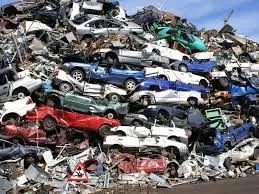

Каст . 07, 2024 07:24 Back to list
Eddy Current Waste Separation A Sustainable Solution for Recycling
In an era where environmental consciousness is paramount, the need for efficient waste separation techniques has never been greater. One of the innovative methods gaining traction in recycling facilities is eddy current separation. This technology not only enhances the efficiency of waste management but also promotes sustainability by recovering valuable materials from mixed waste streams.
Eddy current separation operates on the principle of electromagnetic induction. When a conductor, such as aluminum or copper, passes through a magnetic field, it induces circulating currents, known as eddy currents, within the conductor. These eddy currents create their own magnetic field, which opposes the external magnetic field. As a result, the conductor experiences a repulsive force that can effectively separate it from non-conductive materials.
Eddy Current Waste Separation A Sustainable Solution for Recycling
This technology not only increases recycling rates but also supports circular economy initiatives. By recovering and reintroducing valuable metals into the supply chain, companies can reduce their reliance on virgin materials, thereby diminishing the environmental impact associated with mining and refining. The reuse of metals not only conserves energy but also reduces greenhouse gas emissions, making eddy current separation a cornerstone of sustainable waste management practices.

Moreover, eddy current separation is highly versatile and can be tailored for various applications. It can effectively process a multitude of waste streams, including electronic waste, automotive shredder residue, and post-consumer packaging. As the demand for recycling grows and regulations tighten globally on waste management, the ability to adapt this technology to different waste types will be crucial in improving overall recycling efficiency.
Despite its many advantages, the successful implementation of eddy current separation technology does come with some challenges. The initial investment for the equipment can be significant, which may deter smaller recycling operations from adopting this technology. Additionally, proper maintenance and calibration are essential to ensure optimal performance, as any inefficiencies can lead to lower recovery rates and higher operational costs.
Nonetheless, the benefits of eddy current separation far outweigh the challenges. As more recycling facilities recognize the importance of advanced technologies in waste management, the adoption of eddy current systems is expected to increase. Ultimately, the advancement of waste separation technologies like eddy current systems exemplifies the innovative solutions needed to address the critical issues of waste generation and resource recovery in today’s world.
In conclusion, eddy current waste separation represents a vital step toward achieving sustainable recycling practices. By enhancing the recovery of non-ferrous metals and supporting the circular economy, this technology paves the way for a more responsible approach to waste management. As the world continues to grapple with mounting waste and environmental degradation, embracing such innovative solutions will be essential for creating a sustainable future.
Latest news
eddy-separator-for-non-ferrous-metals
NewsAug.22,2025
e-waste-bin-for-collected-spray-cans-sustainable-disposal-solutions
NewsAug.22,2025
dual-shaft-shredder-with-adjustable-blade-gaps
NewsAug.22,2025
hammer-crusher-machine-with-secondary-crushing
NewsAug.22,2025
copper-granulator-our-promise-of-recycling-excellence
NewsAug.22,2025
industrial-shredders-crafted-for-e-waste-recycling
NewsAug.22,2025